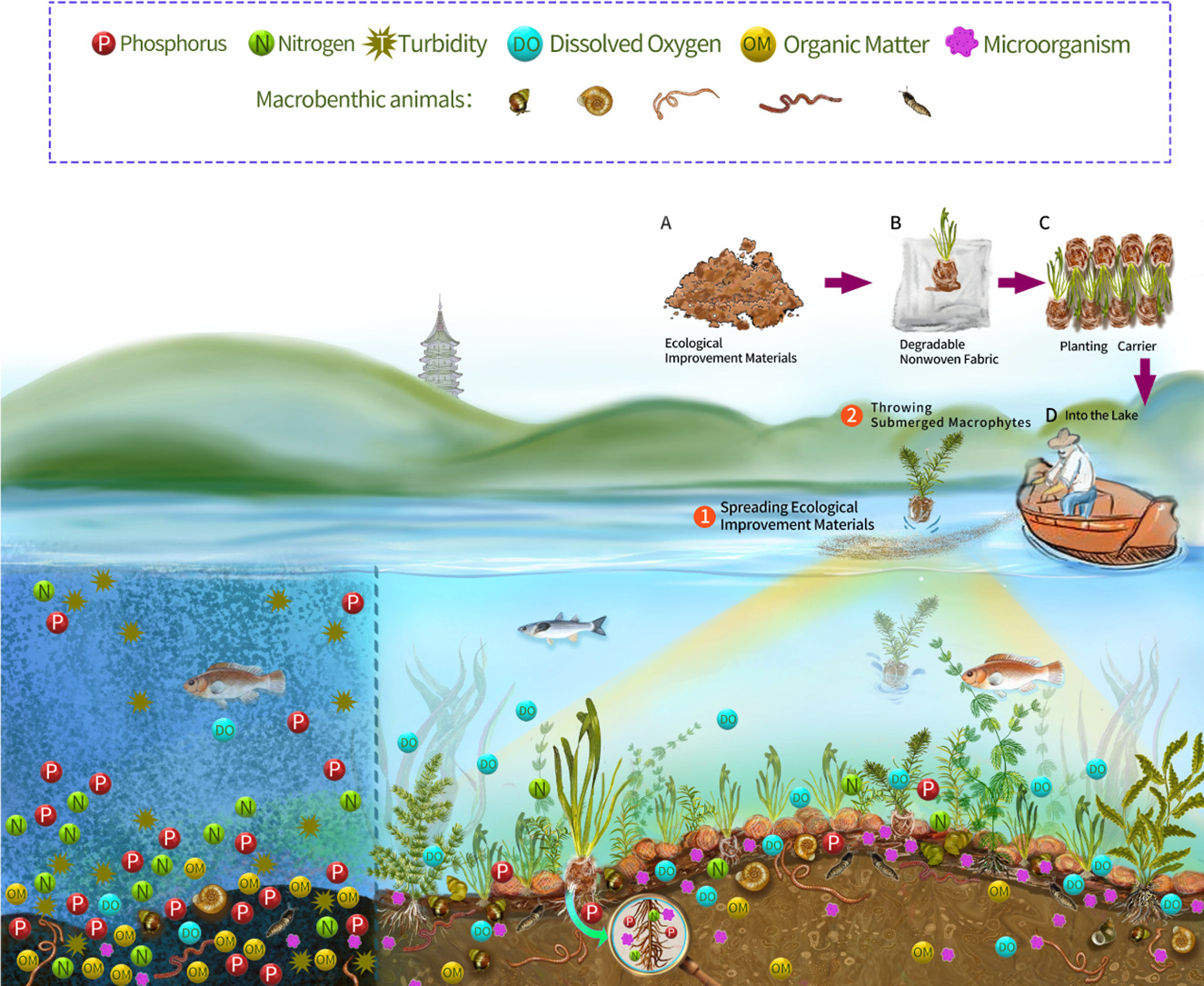
Newsroom
Sediment Improvement and Submerged Plant Restoration Project Improves Reconstruction of Urban Lake Ecosystem
As a World Heritage site listed in 2011, West Lake, located on the western side of Hangzhou City, is a typically shallow and eutrophic lake that faces an issue of "incense ashes sediment".
Floating and soft sediment layers at the bottom of West Lake contain high level of nitrogen, phosphorus nutrients, and organic matter, and are highly humified and moist. As they resemble incense ash, they are commonly referred to as "incense ash sediment", making it difficult for submerged macrophytes to colonize and propagate. Developing a sediment and ecological restoration method for the "incense ashes sediment" of heavy eutrophication urban lakes is a scientific and technical challenge, as well as an obstacle to improving West Lake water quality.
A research group led by Prof. WU Zhenbin from the Institute of Hydrobiology (IHB) of the Chinese Academy of Sciences has found that the restoration project they conducted in West Lake improved sediment conditions, facilitated the growth of submerged macrophytes, and sped up the restoration and reconstruction of the lake ecosystem. This study was published in Science of the Total Environment.
The ecological restoration project aimed to improve sediment and restore submerged plants, and the long-term effects of the project were being investigated over a six-year period.
The researchers developed ecological improvement materials and applied them to improve the sediment condition. According to the results of the application experiment, the ecological improvement materials could inhibit sediment disturbance, adsorb sediment nutrients, decrease sediment organic matter (OM), and improve the colonization and propagation of submerged macrophytes.
“The sediment total phosphorus (TP) decreased from 2.94 mg/g in 2015 to 1.33 mg/g in 2020, and the sediment organic matter decreased from 27.44% in 2015 to 8.08% in 2020. Furthermore, the ecological restoration project successfully restored the submerged macrophytes in the lake,” said Prof. ZHANG Yi, corresponding author of the study.
The researchers further examined how the ecological restoration project affected the diversity of both the sediment microbial community and the benthic macroinvertebrate community. The results showed that the ecological restoration project could increase the Margalef index and Simpson index of the benthic community from 3.06 and 0.41 to 4.76 and 0.62, respectively.
In summary, this study suggests that this ecological restoration method could be applied to the long-term management of shallow eutrophic lakes and slow-flow water channels, especially for special sediments with serious pollution that make submerged plants difficult to grow.

Sediment Improvement and Submerged Plant Restoration project schematic diagram (Image by IHB)
(Editor: MA Yun)